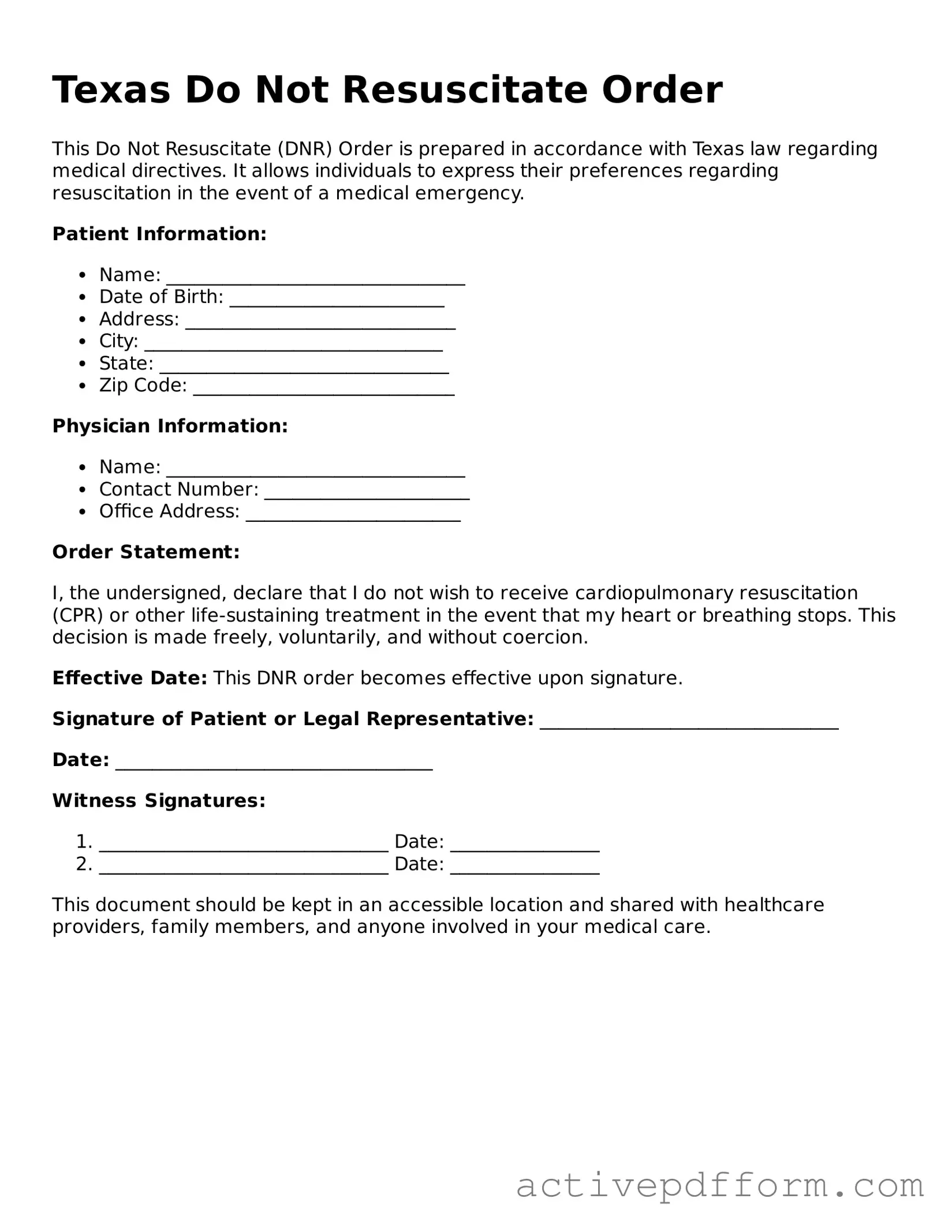Texas Do Not Resuscitate Order
This Do Not Resuscitate (DNR) Order is prepared in accordance with Texas law regarding medical directives. It allows individuals to express their preferences regarding resuscitation in the event of a medical emergency.
Patient Information:
- Name: ________________________________
- Date of Birth: _______________________
- Address: _____________________________
- City: ________________________________
- State: _______________________________
- Zip Code: ____________________________
Physician Information:
- Name: ________________________________
- Contact Number: ______________________
- Office Address: _______________________
Order Statement:
I, the undersigned, declare that I do not wish to receive cardiopulmonary resuscitation (CPR) or other life-sustaining treatment in the event that my heart or breathing stops. This decision is made freely, voluntarily, and without coercion.
Effective Date: This DNR order becomes effective upon signature.
Signature of Patient or Legal Representative: ________________________________
Date: __________________________________
Witness Signatures:
- _______________________________ Date: ________________
- _______________________________ Date: ________________
This document should be kept in an accessible location and shared with healthcare providers, family members, and anyone involved in your medical care.
